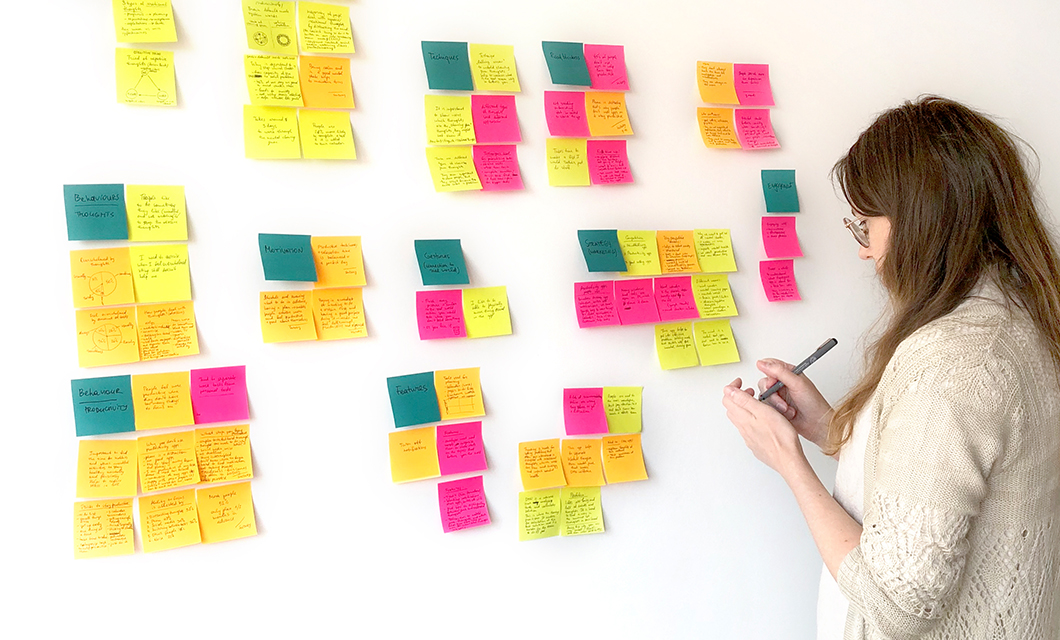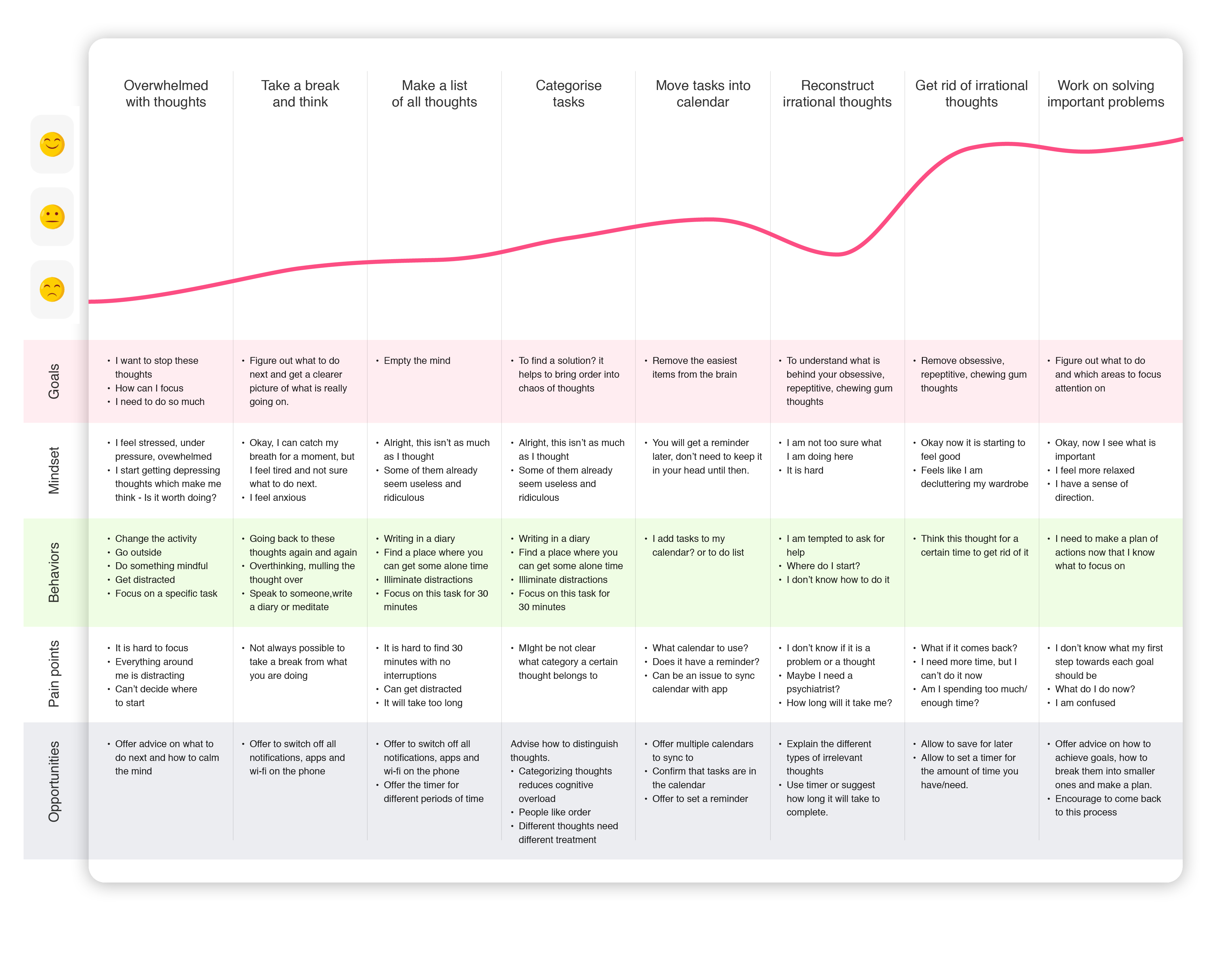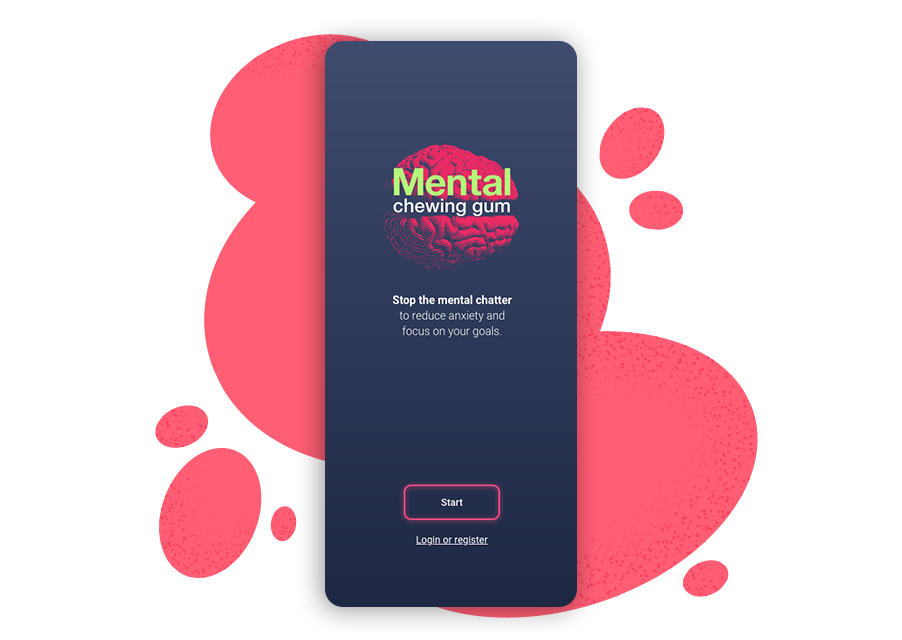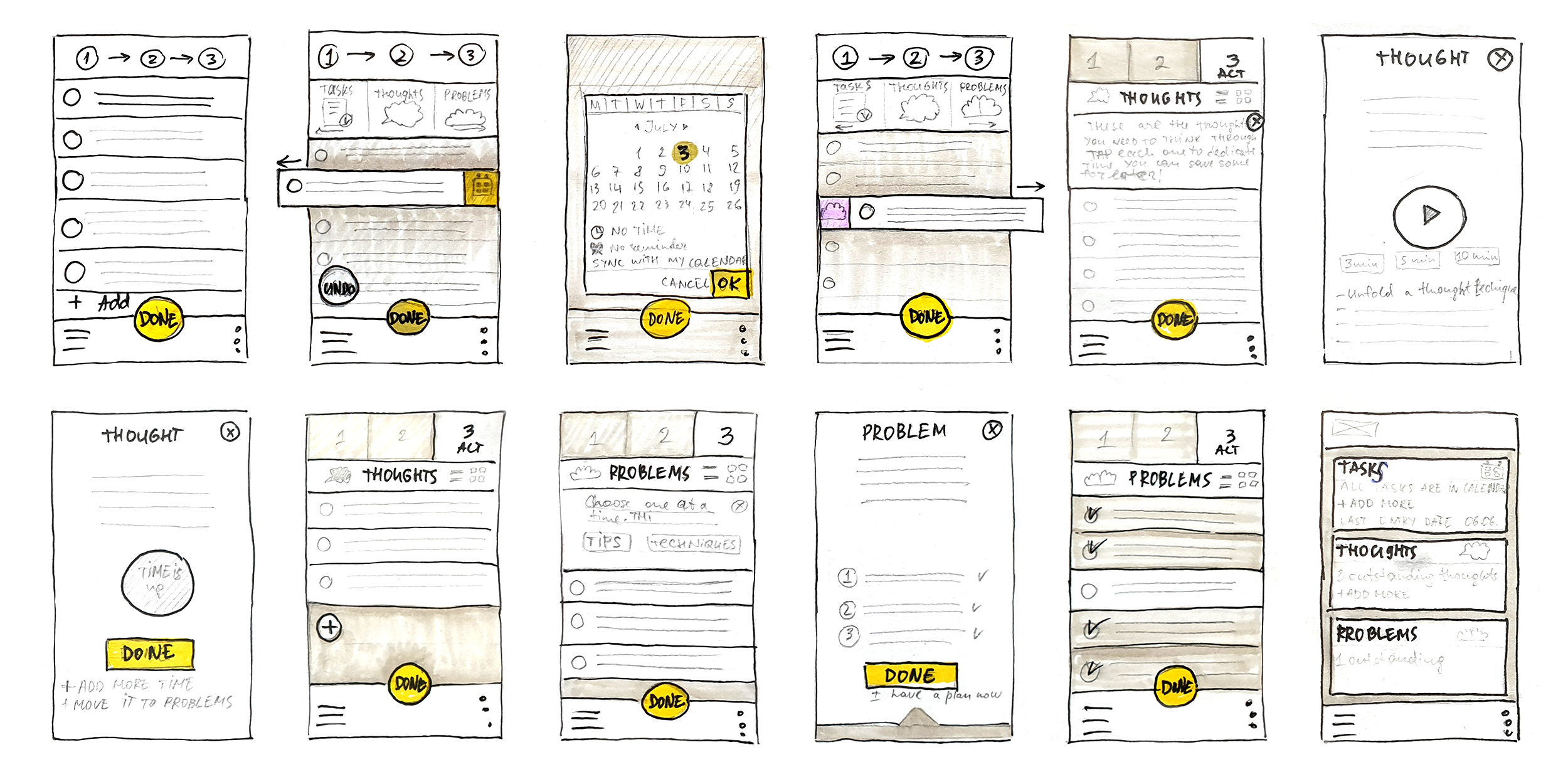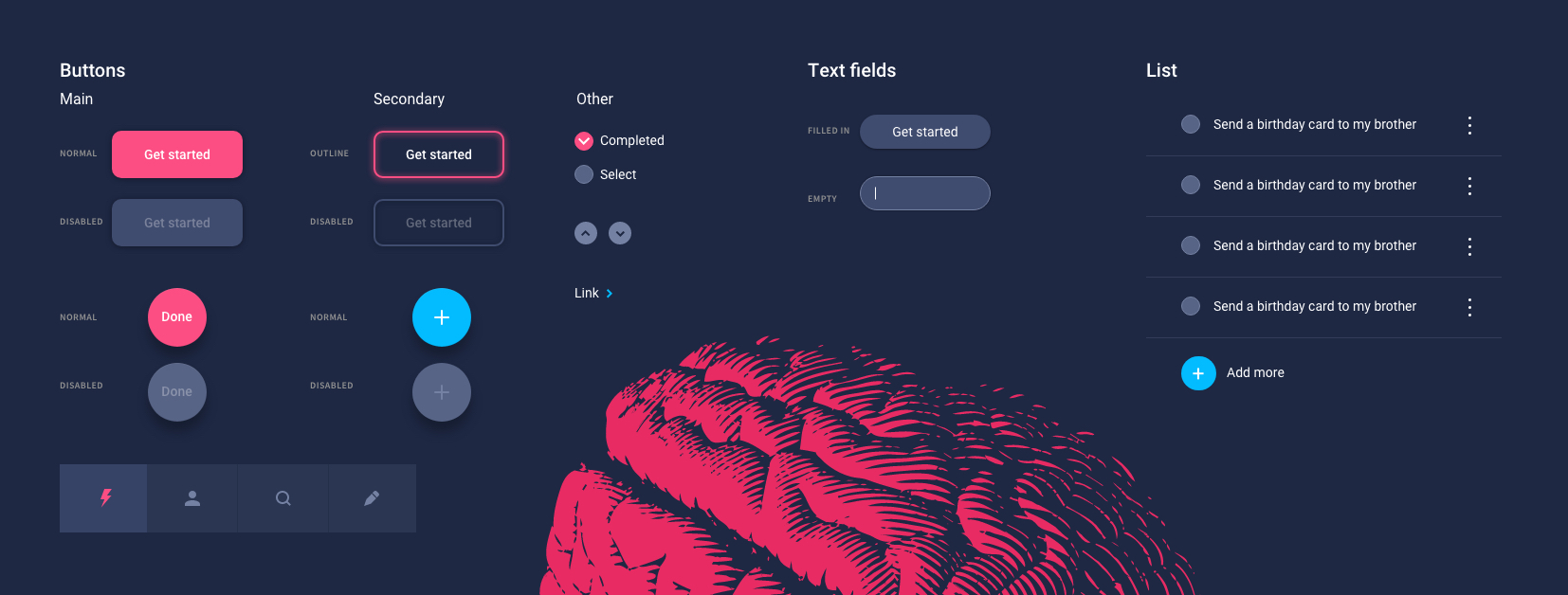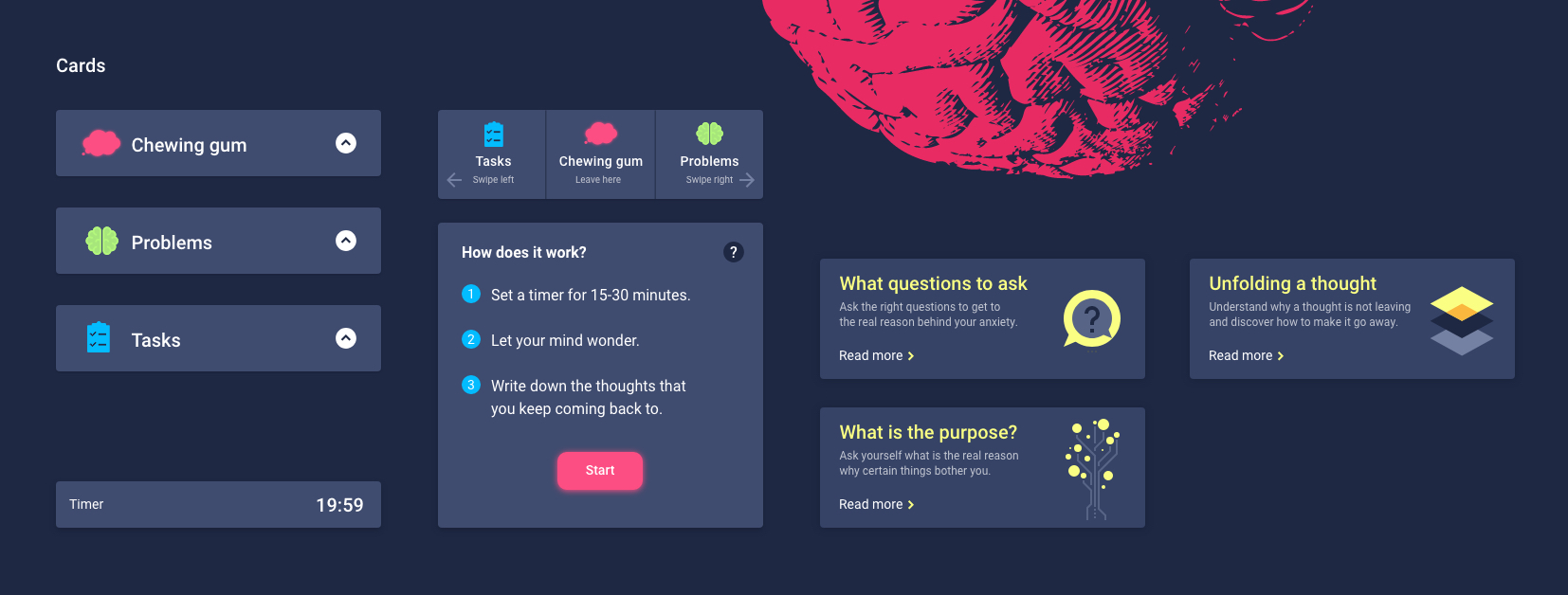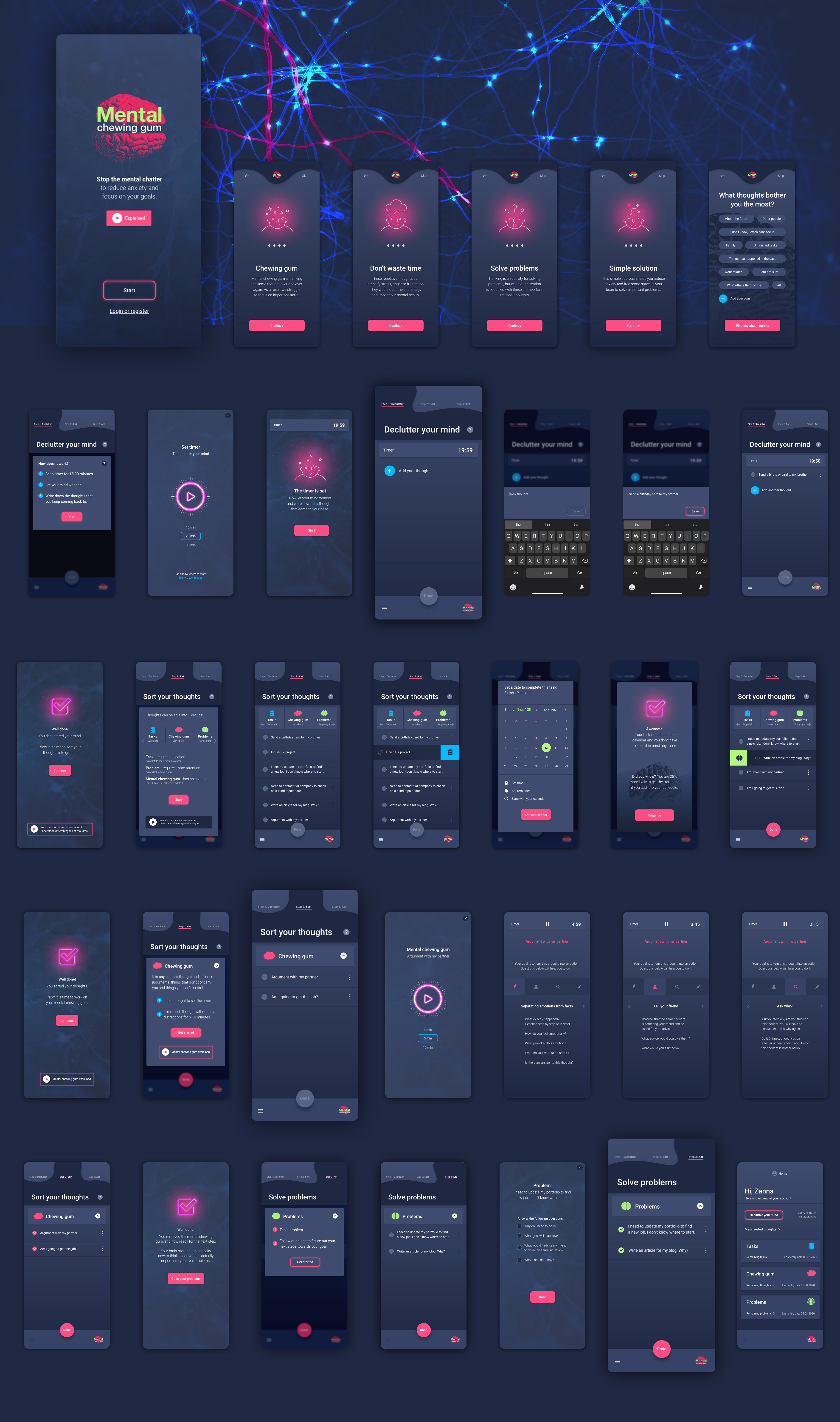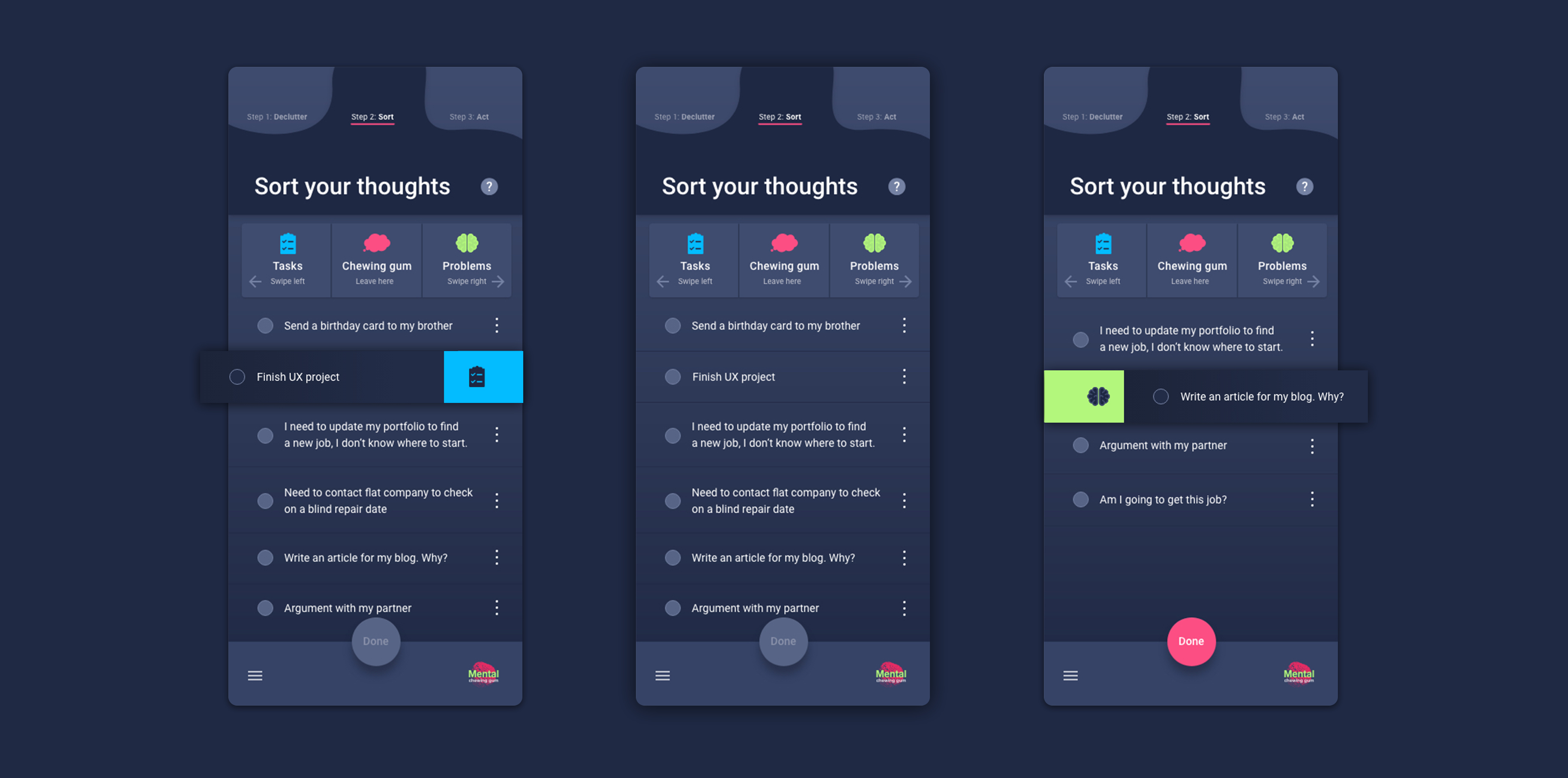Mental chewing gum app
The mind is a useful tool, you just need to learn how to use it.
In this case study, I refined my UX process and created a mobile app.
Mental chewing gum app is based on the neurophysiological principles and helps to focus on real problems and reduce anxiety when we are overwhelmed with irrational thoughts. I found out about this technique from Andrey Kurpatov, who is a well-known Russian psychiatrist and author. This simple technique is very effective, so I delved deeper into it during the lockdown.
The project: Personal, turning a working offline technique into an app just for fun
Tools: Adobe XD
01 Research
Is it a problem?
Mental chewing gum or chatter, monkey mind, rumination
Has your head ever been filled with one single thought or a string of thoughts, that just keep repeating? This process is called rumination, monkey mind, mental chatter, mental chewing gum. This obsessive type of thinking displaces all other types of mental activity and can harm your mental health, intensify depression, and impair your ability to solve problems.
This is a problem that a lot of people face, but there is no awareness about the negative effects of mental noise.
I used varied research methods to better understand the problem and learn how people deal with this common brain mechanism. My main goal was to determine if there is a need for a digital product to help people with this problem.
Concept testing
Studies have shown that people who often experience mental chatter feel less happy.
Mental chatter or mental chewing gum leads to poor performance, weaker ability to solve problems, lower mood, and a decrease in the quality of sleep.
Immersed in a state of mental chatter, people experience more stress and anxiety which can lead to depression.
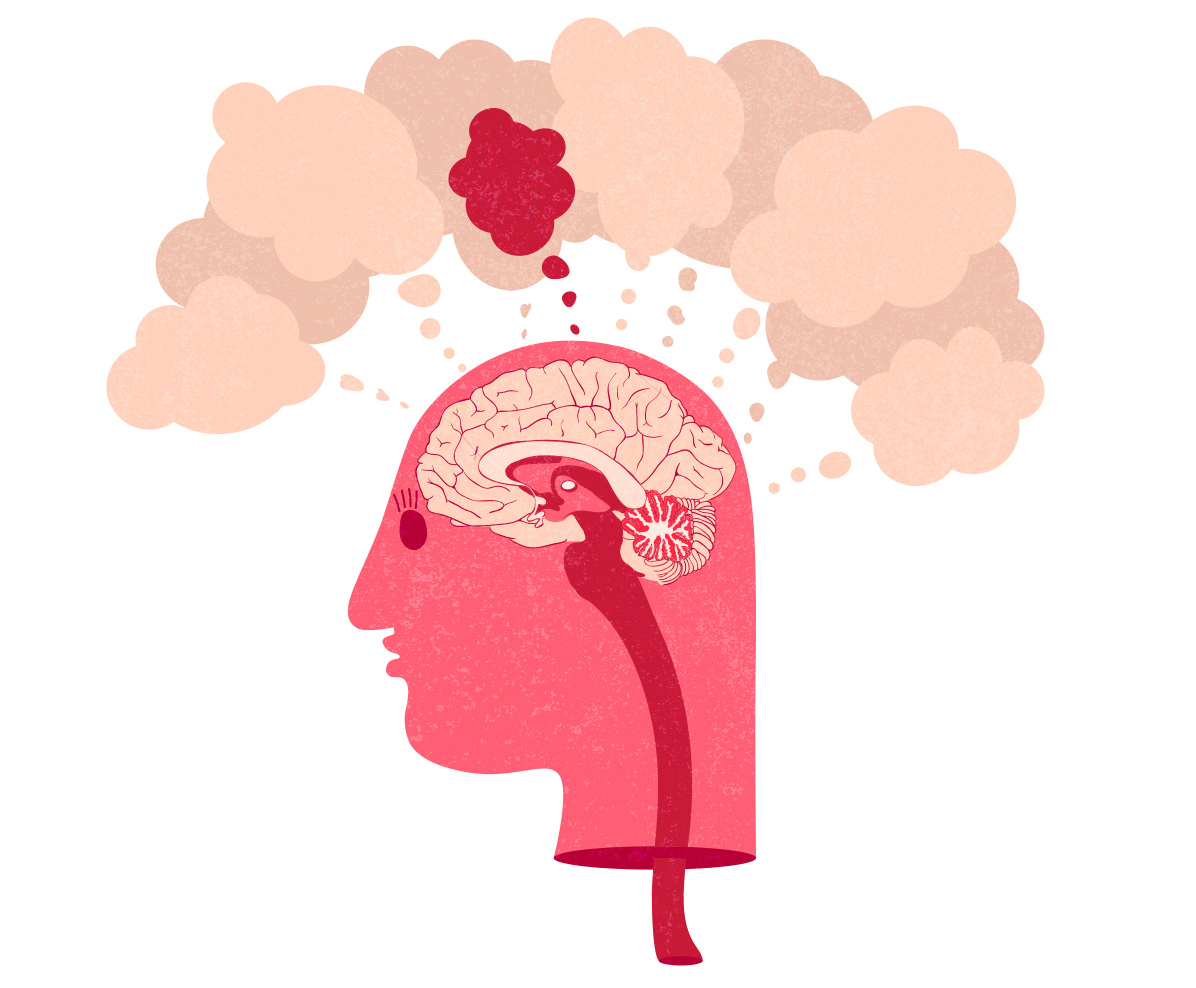
My assumptions:
It is a problem that requires a digital solution
People suffer from obsessive thoughts/mental chatter, but don’t do anything about mental chatter
Mental chatter affects our productivity and ability to focus
Mental chatter stops us from achieving as much as we could

Online survey
Helped me to test my assumptions and determine if there is a problem and if it requires a digital solution.
In-depth interviews
I conducted in-depth interviews to learn more about user goals and behaviours in the situations of mental chatter.
Google analytics
I used it to see what is the most commonly used name for the mental chatter and if people search for it at all.
Scientific research
The science of how mindfulness is connected to our ability to solve problems and why it makes us feel happier.


